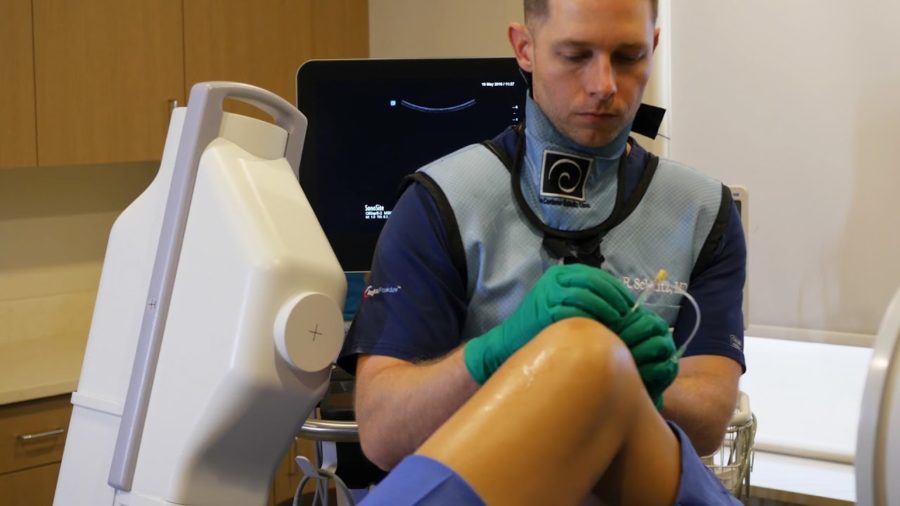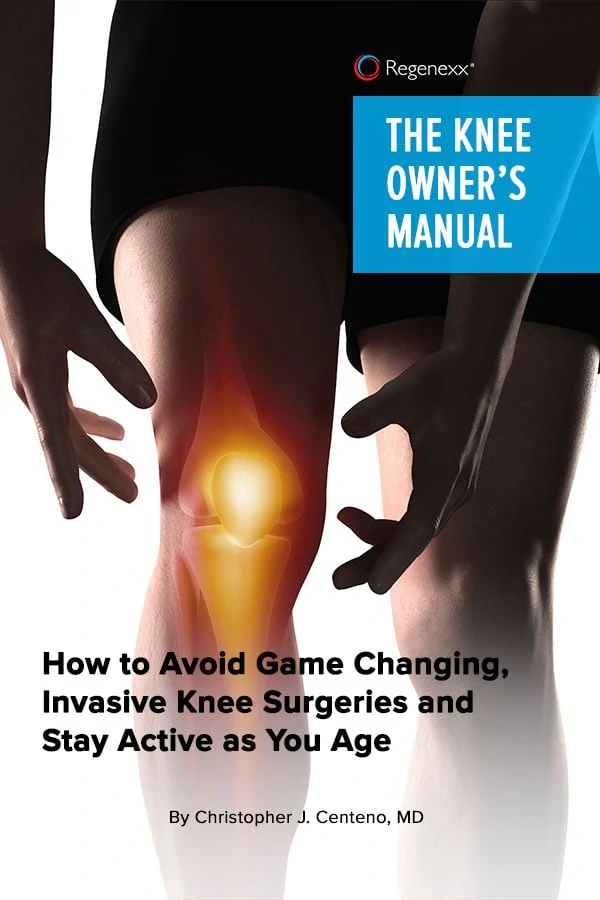In the field of regenerative medicine, we treat ACL tears by injecting orthobiologics, such as bone marrow stem cells.
First, it’s important to understand that there are numerous subtypes and classifications of anterior cruciate ligament (ACL) tears, and in order to properly inject an ACL tear, we need to know the type and the precise location. Second, it’s imperative to understand that not all injection techniques are created equal. So while one provider might be using the latest state-of-the-art image-guided injection techniques, another could simply be injecting blindly around the torn ACL. If the latter is the case, a successful outcome is much less likely.
Let’s first review the types of ACL tears, and then we’ll discuss injection techniques.
The 3 Types of ACL Tears
When it comes to ACL tears, there are numerous classifications and subtypes. In regenerative medicine, however, we define these tears by 3 types: partial thickness, full thickness non-retracted, and full thickness retracted.
Partial Thickness ACL Tear
A partial-thickness ACL tear is one that hasn’t torn completely through. So it’s exactly as it sounds—on imaging, we would see that a portion of the ligament is still intact.
Full-Thickness Non-retracted ACL Tear
A full-thickness nonretracted ACL tear is one that has torn through; however, it hasn’t completely pulled apart or snapped back like a rubber band would. So the ligament is certainly fully torn, but the pieces are still in place.
Full-Thickness Retracted ACL Tear
A full thickness retracted ACL tear is one that has torn through, but in this case, the two pieces have pulled apart or even snapped back like a rubber band.
Injection procedures in regenerative medicine can treat partial-thickness and full-thickness nonretracted tears. Some full-thickness minimally retracted tears can also be treated with an injection as well, but the larger retracted tears could not be treated with an injection. Fortunately, most ACL tears (about 70%) fall into the tear categories that can be treated with an injection procedure, or the perc-ACLR procedure (which we’ll cover in depth tomorrow).
Want to Get Back to What You Love, Without Surgery and Medication?
ACL Injection Techniques
There are two ACL bundles in the knee anatomy: the anterior medial (AM) and the posterior lateral (PL). When injecting orthobiologics into the ACL, it’s important to cover both bundles to have the best chance of a successful outcome. It’s imperative that the right injection technique is used to accomplish this. There are four injection techniques that can potentially be used—blind, musculoskeletal ultrasound guidance, fluoroscopy guidance, and arthroscopy—though just because there are four options to choose from, this doesn’t mean all are good options. Let’s review each injection technique.
Blind ACL Injection
When injecting the ACL, blind injection is not a good choice. A blind injection is one that uses NO guidance to assure proper placement of the needle. We’ve tested blind injection techniques, and our conclusion is that while the orthobiologics may inject somewhere in the vicinity of the ligament, it is highly unlikely for the needle to actually find its way to the ACL. If it does, its sheer blind luck.
Musculoskeletal Ultrasound Guidance
Limited visibility is one of the main problems we’ve found with musculoskeletal ultrasound guidance for an ACL injection. Instead of visualizing the full ACL, we only are able to see the bottom one-third or so at the tibial insertion. So we can’t tell if the orthobiologic we just injected actually reached the upper area of the ACL or if just ended up dumping out the back of the ACL at the tear before it reached the top. If it doesn’t reach the top, that area goes untreated. Though not the best, it is conducive to some ACL stem cell treatment procedures but not all.
Fluoroscopy (Real-Time X-Ray) Guidance
Fluoroscopy, or real-time X-ray guidance allows us to see the entire ACL with both bundles. It allows us to watch in real-time precisely where our needle is and reposition if necessary. In addition, as we inject with the contrast, we can watch in real-time as every treated area of the ACL is “colored” with the contrast, so we know exactly where the orthobiologic ended up. Fluoroscopy guidance is the technique we use for our perc-ACLR injection procedure.
Arthroscopy
ACL injections could be performed during a knee arthroscopy, and, like with fluoroscopy guidance, you can see the entire ACL; however, arthroscopy is a more invasive procedure that creates a higher degree of risk for the patient.
Our recommendation is if you have a partial-thickness, full-thickness non-retracted, or minimal full-thickness retracted ACL tear and you want an alternative to ACL surgery, visit an interventional orthopedic physician. He or she will be able to determine your candidacy for an advanced fluoroscopy-guided orthobiologic injection of your torn ACL.
Be sure to check in tomorrow as we cover the perc-ACLR procedure and candidacy for the ACL stem cell treatment in depth.

